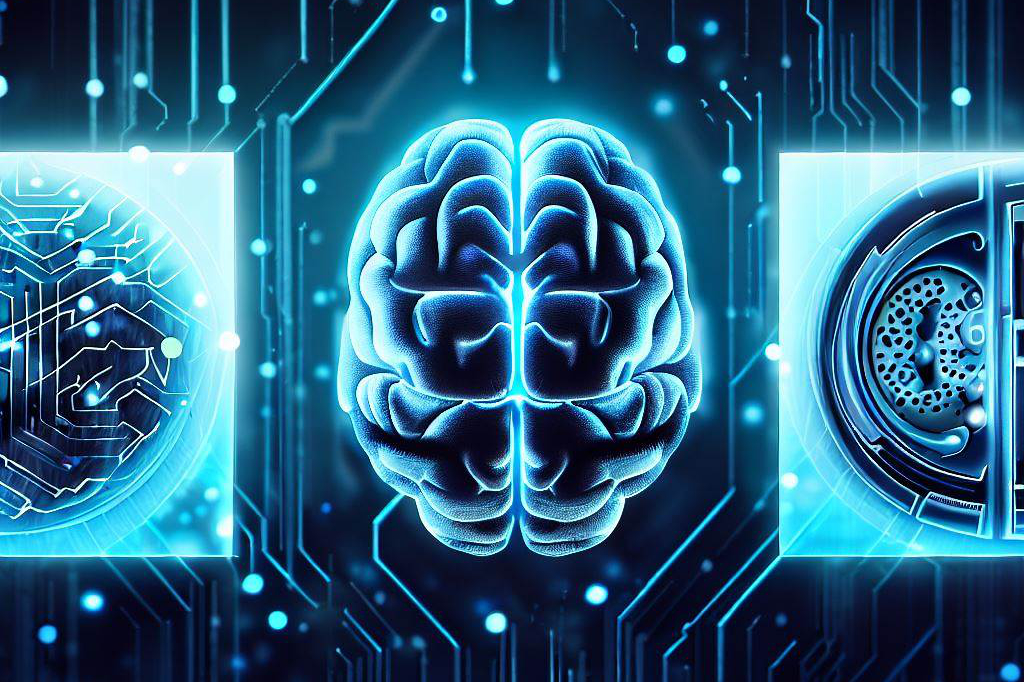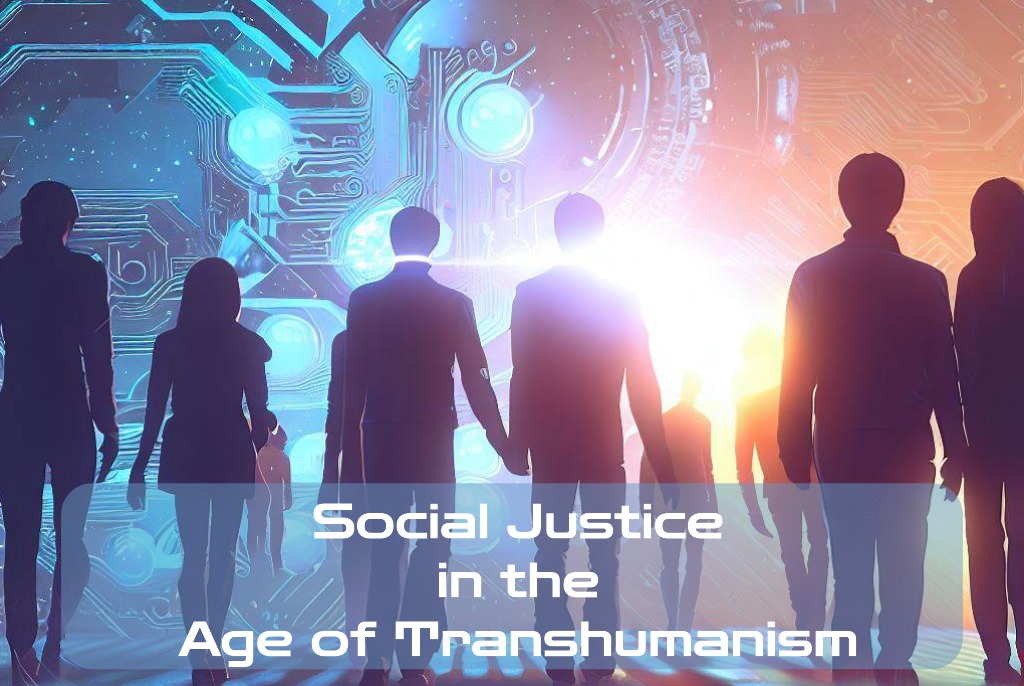Defining Transhumanism
Transhumanism is a movement that advocates for the use of technology to enhance human physical and intellectual abilities. It is often associated with the development of new technologies such as artificial intelligence, genetic engineering, and nanotechnology.
According to transhumanists, these technologies can be used to overcome human limitations such as disease, death, and cognitive impairments. In essence, transhumanism aims to elevate humanity beyond its current biological constraints.
Importance of Social Justice in the Age of Transhumanism
As we move towards a future where emerging technologies become an integral part of our daily lives, it is important to consider the implications for social justice. Access to these technologies will not be equal across all communities or even all individuals. There are already clear examples of how technology has widened existing inequalities in society – from the digital divide between rich and poor countries to racial biases in facial recognition software.
In order to ensure that emerging technologies do not exacerbate these inequalities further, we need to have a frank discussion about what social justice means in this context. Is access to life-extending treatments or cognitive enhancements a basic human right?
How do we prevent these technologies from being monopolized by those who can afford them? These are crucial questions that need answering if we want a future where technological progress benefits everyone.
Reflections on Social Justice: My View
My stance is to argue that social justice must be at the forefront of discussions around transhumanism and emerging technologies. We must consider how access to these innovations will impact marginalized communities and work towards ensuring equitable distribution.
Only then can we realize the full potential of transhumanist ideals without leaving anyone behind. In subsequent sections, this article will explore some potential benefits and risks associated with emerging technologies before delving into ways in which we can ensure equal access to these tools.
Overview of Emerging Technologies

Emerging technologies such as
- Artificial Intelligence (AI),
- Genetic Engineering
- and Nanotechnology
are rapidly transforming our world.
These technologies have the potential to revolutionize healthcare, agriculture, transportation, and manufacturing, among other areas. They offer incredible possibilities for enhancing the human experience and addressing some of the most pressing challenges facing humanity today.
Artificial Intelligence (AI)
Artificial intelligence refers to machines that can learn from experience and perform tasks that would typically require human intelligence. AI systems can improve decision-making processes, automate repetitive tasks, and provide personalized services.
The development of AI is accelerating at a rapid pace, with applications ranging from self-driving cars to virtual assistants. While there are numerous benefits associated with AI, there are also concerns about its potential impact on society.
One major concern is that AI could lead to widespread job displacement as machines become more capable of performing tasks previously done by humans. Additionally, there is a risk that AI systems could be biased or discriminatory if they are not developed in an ethical manner.
Genetic Engineering
Genetic engineering involves manipulating an organism’s genetic material in order to modify its characteristics or traits. This technology has already been used to develop crops that are resistant to pests and diseases and has the potential for even greater applications in fields such as medicine. However, there are also ethical concerns associated with genetic engineering.
One issue is that it could be used to create “designer babies” who have specific traits chosen by their parents. There is also potential for unintended consequences if genetically modified organisms escape into the wild or cause unforeseen ecological impacts.
Nanotechnology
Nanotechnology involves manipulating matter on an atomic or molecular scale in order to create new materials and devices with unique properties. Applications of nanotechnology include drug delivery systems, energy storage devices, and water filtration systems. There are many potential benefits of nanotechnology, including improved medical treatments and more sustainable energy sources.
However, there are also concerns about the environmental and health impacts of nanoparticles, which can be toxic in certain situations. Additionally, there is a risk that the development of nanotechnology could exacerbate existing inequalities if access to these technologies is not distributed equitably.
Emerging technologies such as AI, genetic engineering, and nanotechnology offer incredible possibilities but also come with ethical considerations and concerns. It is important for society to understand the potential benefits and risks associated with these technologies in order to make informed decisions about their development and use.
Potential Benefits and Risks of Emerging Technologies

Benefits for Society and Individuals: Enhancing Human Capabilities
Emerging technologies such as AI, genetic engineering, and nanotechnology have the potential to enhance human capabilities beyond our current limits. For example, AI can improve healthcare outcomes by analyzing large amounts of medical data to identify patterns and make better diagnoses.
Genetic engineering can cure genetic diseases like cystic fibrosis or muscular dystrophy by replacing or modifying defective genes. Nanotechnology can enable the creation of new materials with unprecedented properties, such as lightweight but strong composites that can revolutionize transportation.
In addition to these practical benefits, emerging technologies can also enhance cognitive and emotional capacities. For instance, brain-computer interfaces (BCIs) could allow people with disabilities to control their environment using their thoughts.
BCIs could also augment healthy individuals’ brain functions by enhancing memory or creativity. However, some worry that these enhancements could lead to a “superior” class of humans that would exacerbate inequality and discrimination.
Risks for Society and Individuals: Hacking Humanity
As with any technology, emerging technologies come with risks that need to be carefully considered and mitigated. One major risk is cybersecurity threats from hackers who exploit vulnerabilities in connected devices or networks.
For example, autonomous vehicles could be hacked to cause accidents, or ransomware attacks could lock down critical infrastructure like power grids or hospitals.
Another risk is unintended consequences from the use of technology without proper testing or regulation.
For instance, genetically modified organisms (GMOs) could have unforeseen ecological impacts on ecosystems if they are released into the wild without containment measures in place.
Similarly, AI algorithms trained on biased datasets could perpetuate systemic discrimination against marginalized groups if they are used for decision-making without oversight.
Ethical Considerations: Who Decides What’s Right?
Emerging technologies also pose ethical dilemmas that require careful consideration from society and policymakers. In particular, questions about who decides what’s right or wrong when it comes to using these technologies need to be addressed.
For example, should genetic engineering be used to create “designer babies” with desired traits like intelligence or athleticism?
Should AI systems be allowed to make life-or-death decisions in military contexts without human oversight?
Another important ethical consideration is the potential for emergent properties or unforeseen consequences from combining different technologies. For instance, combining AI and nanotechnology could lead to the creation of autonomous “nanobots” that can self-replicate and cause unintended harm if they malfunction or are used maliciously.
While emerging technologies offer many potential benefits for society and individuals, they also come with significant risks and ethical considerations that must be carefully considered and addressed. Policymakers need to work closely with scientists, engineers, and ethicists to ensure that these technologies are developed in a way that maximizes their benefits while minimizing their risks.
Economic Barriers: The Divide between Haves and Have-nots
Emerging technologies have the potential to revolutionize many areas of life, from healthcare to education. However, these innovations often come at a steep cost, making them inaccessible to many people. The economic barrier is one of the biggest hurdles for individuals who wish to access emerging technologies.
The high costs associated with research and development, production, and distribution of these technologies make them prohibitively expensive for low-income individuals and families. The wealth gap in society creates a divide between haves and have-nots when it comes to accessing emerging technologies.
Those with more resources can afford to purchase cutting-edge devices or undergo advanced medical treatments, while those without financial means are left behind. This economic divide perpetuates social injustices by denying equal access to opportunities for social mobility.
For instance, gene editing therapies that can cure rare genetic diseases are extremely costly and only available in a few countries. Inaccessible technology creates a situation where wealthy patients can receive the most advanced treatments while people from poorer backgrounds cannot get even basic medical care, creating disparities in health outcomes based on income levels.
Geographic Barriers: Access Challenges in Developing Countries
The current state of access to emerging technologies is particularly challenging for people living in developing countries. These individuals face not only economic but also geographic barriers in accessing cutting-edge technology due to lack of infrastructure and resources. In such places as rural Africa or Southeast Asia, technological infrastructure is often limited or nonexistent.
For example, some remote regions do not have reliable power sources or internet access necessary for using technology products that rely on cloud connectivity or machine learning algorithms. Underdeveloped countries face additional challenges when it comes to acquiring knowledge about newly developed technologies.
Language barriers combined with a lack of education make it difficult for people in such societies to learn about or understand emerging technologies. This lack of awareness further creates a divide between developed and developing countries, denying equal access to technological advancements that could improve lives.
Societal Barriers: The Impact of Social Injustice on Accessing Emerging Technologies
Societal barriers, including discrimination and prejudice, play a significant role in determining who has access to emerging technologies. For example, ethnic or racial minorities may face difficulty accessing cutting-edge healthcare treatments due to systemic issues like unequal distribution of resources or racism within the medical field. Another example is the incarceration system, which disproportionately affects people from lower socio-economic backgrounds and minorities.
These individuals often face barriers when it comes to accessing medical care or advanced technological devices that could improve their quality of life upon release. In addition, gender biases can also impact access to emerging technologies.
Women are underrepresented in many areas of technology development and innovation, meaning their unique needs are often overlooked. As such, women may experience difficulties accessing technology specifically designed for them or finding support when it comes to using advanced technology products.
While emerging technologies offer great potential benefits for society as a whole, unequal access based on economic status, geographic location, and societal factors like prejudice creates disparities that perpetuate social injustices. Therefore policies need to be put in place by various stakeholders including governments and corporations along with community engagement initiatives aimed at ensuring equal access for all individuals irrespective of their backgrounds
Ensuring Equal Access to Emerging Technologies

Government Policies and Regulations: Bridging the Digital Divide
In order to ensure equal access to emerging technologies, governments must take an active role in bridging the digital divide. This means implementing policies and regulations that promote the availability of resources for disadvantaged communities. One way to do this is through the provision of public funds for technology research and development.
Governments can also incentivize private companies to invest in these communities by offering tax breaks or other financial incentives. Another way governments can bridge the digital divide is by providing subsidies or grants for low-income families so that they can afford access to emerging technologies.
This could include things like subsidies for internet connectivity or assistance with purchasing new technology. Additionally, governments can work to increase digital literacy among disadvantaged communities through education programs, that will help individuals understand how to use emerging technologies effectively.
Corporate Responsibility and Accountability: Ethical Considerations
Corporate responsibility and accountability are vital considerations when it comes to ensuring equal access to emerging technologies. Companies must consider the impact their products have on society as a whole, rather than just focusing on profit margins.
This means taking a holistic approach that considers both social justice concerns and potential ethical issues. One way companies can ensure ethical considerations are taken into account is by involving stakeholders from marginalized communities in their decision-making processes.
This could include community engagement initiatives or working with non-profit organizations that advocate for social justice causes. Additionally, companies should ensure that they have diverse teams working on technology development projects so that a variety of perspectives are considered.
Community Engagement and Empowerment: Collaboration with Marginalized Communities
Community engagement and empowerment are key to ensuring equal access to emerging technologies. It’s important for marginalized communities to have a say in how these technologies are developed and implemented in their neighborhoods. Therefore, companies should prioritize collaboration with these communities and engage them in the decision-making process. One way to do this is by hosting workshops, focus groups, or community events where individuals can provide feedback on emerging technologies.
Additionally, companies can partner with local non-profits or community organizations to provide resources for learning about emerging technologies. This could include providing access to technology experts or hosting educational events.
Overall, ensuring equal access to emerging technologies requires a multi-faceted approach that involves government policies and regulations, corporate responsibility and accountability, and community engagement and empowerment. By working together towards this goal, we can ensure that everyone has an equal opportunity to benefit from the advancements of the digital age.
Social justice must be at the forefront of discussions surrounding emerging technologies in the age of transhumanism. The potential benefits and risks of these technologies cannot be ignored, and it is imperative that we ensure equal access for all individuals and communities. Through government policies and regulations, corporate responsibility and accountability, and community engagement and empowerment, we can work towards a more just and equitable future.
I assert that social justice must be prioritized in the face of emerging technologies in the age of transhumanism to ensure equal access for all individuals. This statement serves as a guiding principle throughout my exploration of potential benefits and risks, the current state of access to emerging technologies, and strategies for ensuring equitable access.
Future Implications for Social Justice in the Age of Transhumanism
The implications for social justice are vast when it comes to emerging technologies in the age of transhumanism. It is our duty to ensure that these transformative technologies do not further perpetuate inequalities but rather serve as tools to improve quality-of-life experiences across society. In doing so, we can strive towards a just future where all individuals have equal opportunities to reap the benefits of technological advancements.
TL;DR – FAQs
Q: What is transhumanism?
A: Transhumanism is a philosophical and intellectual movement that advocates for the use of technology to enhance human physical and cognitive abilities and improve aspects of life such as health, lifespan, and wellbeing.
Q: What are some of the emerging technologies in the age of transhumanism?
A: Some of the emerging technologies in the age of transhumanism include artificial intelligence (AI), genetic engineering, and nanotechnology.
Q: What are the potential benefits of these emerging technologies?
A: These emerging technologies have the potential to revolutionize many areas of life, from healthcare to education. They may also improve health outcomes, increase lifespan, and enhance wellbeing.
Q: What are some ethical considerations associated with these technologies?
A: Ethical considerations include potential misuse of the technology for malicious purposes, the potential for autonomous technologies to make decisions in critical situations without human oversight, and unforeseen consequences from combining different technologies.
Q: What are some barriers to accessing emerging technologies?
A: Barriers include economic barriers such as the high costs associated with the technology, geographic barriers such as the lack of infrastructure in developing countries, and societal barriers such as discrimination and prejudice.
Q: What are some strategies to ensure equal access to emerging technologies?
A: Strategies to ensure equal access include government policies and regulations that promote the availability of resources for disadvantaged communities, corporate responsibility and accountability, which ensure ethical considerations are taken into account, and community engagement and empowerment, which involve marginalized communities in the decision-making process.
Q: What role does social justice play in the age of transhumanism?
A: Social justice must be prioritized in the age of transhumanism to ensure that everyone, irrespective of their backgrounds, has equal access to emerging technologies. It aims to prevent these transformative technologies from perpetuating inequalities and instead, serve as tools to improve quality-of-life experiences across society.
Q: What are the future implications for social justice in the age of transhumanism?
A: The future implications for social justice in the age of transhumanism are vast. It’s crucial to ensure that transformative technologies do not further perpetuate inequalities but rather serve as tools to improve quality-of-life experiences across society. This can strive towards a just future where all individuals have equal opportunities to benefit from technological advancements.

C M, a seasoned editor, journalist, and consultant, is deeply fascinated by the convergence of technology, space, and the future of humanity.
With a particular interest in transhumanism, futurology, and the philosophical and ethical dimensions of these domains, C M serves as the lead contributor to TranscendSphere and SpaceSpotlight.
When not penning insightful articles on these rapidly evolving fields, C M indulges in their love for podcasts and books, proudly embracing their status as a ‘Happy Nerd Extraordinaire!’





